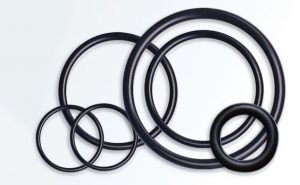Where and Why Are O Rings Used?
Oct 31, 2018
 You’ve probably come across numerous o-rings in your lifetime, whether you knew it or not. From cars to cameras, these little doughnut shaped parts are instantly forgettable but endlessly useful. They are probably one of the biggest revolutions in mechanical engineering to date, allowing us to develop new machinery, better products and safer working environments. So, what are o rings used for, and why are they so popular? Let’s find out.
You’ve probably come across numerous o-rings in your lifetime, whether you knew it or not. From cars to cameras, these little doughnut shaped parts are instantly forgettable but endlessly useful. They are probably one of the biggest revolutions in mechanical engineering to date, allowing us to develop new machinery, better products and safer working environments. So, what are o rings used for, and why are they so popular? Let’s find out.
Why are o rings used?
O rings have some amazing properties which makes them a crucial component of many precision engineered devices. Their natural propensity to return to their original shape when the cross section has pressure exerted on it means they are one of the most economical and reliable methods of making a strong seal possible.
The other reason o rings are so commonly used is down to the wide range of materials they can be made from. The majority of o rings are made from elastomers, which are a type of elastic polymer, but there are a huge variety of these elastomers available, each with different strengths, weaknesses and tolerances. The application that the o ring is destined for will determine which type of material is most suitable, for example:
- High and low temperatures: Silicone and fluorosilicone can cope with temperatures as low as -100°C. Cryogenic operations will require a seal that can cope with low temperatures such as the NES Astra Seal®. For very high temperatures, FFKM works at up to 316°C
- Chemical compatibility: Viton™, also known as FKM/FPM, o rings are resistant to many chemicals and work at high temperatures too
- Hot water and steam: Ethylene propylene o rings (EPDM) are resistant to steam and hot water, as well as to alcohol, strong alkalis and fluids found in automotive applications
- Grease and hydraulic fluids: Buna-N o rings, also known as nitrile o rings, are best to use where there is a lot of grease or hydraulic fluid around
As you can see, for pretty much any application you can think of, there will be an o ring which can handle that environment. This means they are useful in a huge range of applications, from appliances found around the home to gigantic machines used in manufacturing and even in the space shuttle!
What are o rings used for?
O rings are used to block a path which may otherwise allow a liquid or a gas to escape. The o ring is placed into a groove to secure them in place, and then compressed between two surfaces. By squeezing the o ring, there is no more clearance for it to move and it blocks the pathway of the liquid or gas you are trying to seal in place.
When the system comes under pressure, the o ring is squeezed against the opposite wall of the groove, maintaining a perfect seal even under very high or low pressures. The materials that o rings are made from (elastomers) are naturally springy and have a desire to return to their original shape, so when the pressure ceases, they spring back to their original position, maintaining a seal and readiness for the next cycle.
In a nutshell and to answer the question of what are o rings used for, they are used to seal in a liquid or gas and are the most effective way of ensuring a robust, reliable seal.
Where might you find o rings?
Because o rings are so good at keeping liquids and gasses from moving freely around, you’ll often find them in mechanical parts and processes, particularly where extremes of temperature or pressure are at work. Some applications that are almost certainly springing to mind already could include engines, boilers, refrigerators and compressors. But o rings are also found in some rather surprising places; for example:
- Scuba gear: O rings in scuba gear are a life saving component of the breathing apparatus. Before every dive, the diver will check the o ring in the neck of their air tank to ensure it’s going to provide a good seal and deliver air to their regulators, not sea water.
- Dental implants: In dental implants, liquid needs to be kept out of the implant to avoid the patient suffering with pain or infection. To do this, they use a biomedical silicone o ring, which forms a perfect seal and keeps the new tooth safe.
- Paintballing: Paintball guns use compressed air to shoot globs of paint at unsuspecting enemies. To keep the air sealed in and ensure a powerful shot, o rings are used throughout the gun.
- Your beer: If you enjoy a pint at the pub on the way home from work (don’t we all), o rings are contributing to your enjoyment and relaxation. Without an o ring, it would not be possible to transport the beer from the casket to the tap, or to carbonate it for that lovely bubbly refreshment.
Next time you’re down the pub, you can delight your friends with stories of what are o rings used for, and all the surprising places they might come across one.
For advice on o ring uses and materials, talk to our team of experts about our range of products including encapsulated seals, hot vulcanised o rings and moulded o rings.
